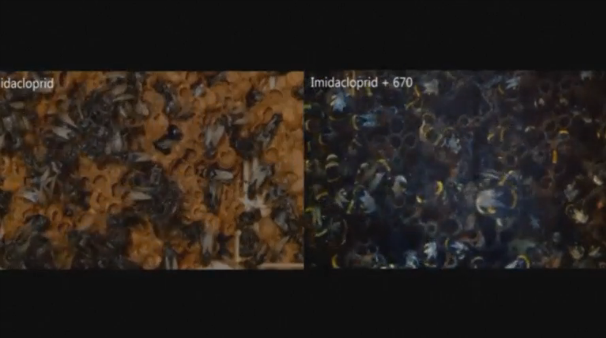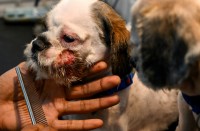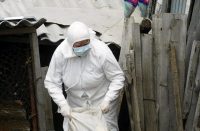
LONDON, ENGLAND, UK (Reuters) — Colony Collapse Disorder (CCD), a growing phenomenon in which the majority of worker bees abandon a hive, is partially caused by neonicotinoid pesticides used by farmers. Scientists say CCD could potentially wipe-out large numbers of the pollinating insect, causing catastrophic damage to world food supplies.
A British team of scientists believe they have an answer – treating bees with inexpensive long-wavelength light therapy.
The team at University College London (UCL), led by Professor Glen Jeffery, says its tests showed that bees suffering from neonicotinoid poisoning recovered lost mobility having been treated with twice-daily 15 minute bursts of near infrared light (670 nanometres) shone into their hives.
“One of the ways in which these insecticides work is that they take the energy out of the cell,” explained Jeffery. “Every cell has a series of batteries in it called mitochondria. The insecticide discharges the batteries, so they have no energy for normal metabolic function. This red light is absorbed by the battery, and as it absorbs the red light it increases the output and energy of the battery. We can use that to restore some of the function of the cell.”
Researchers set up four groups of bees, sourced from commercial hives, inside the UCL Institute of Ophthalmology basement. Each colony contained more than 400 bees. Two groups were exposed to Imidacloprid – the most common commercial neonicotinoid, – for ten days. One of these groups was also treated with light therapy.
The untreated poisoned bees suffered rapid loss of mobility, leaving many unable to feed themselves and eventually dying of starvation. Those that were treated with light therapy performed just as well as the insects that hadn’t been poisoned.
Significantly, the group treated with light therapy without being poisoned had a better survival rate than the control group, suggesting that treating the bees preventively, before their exposure to such pesticides, could be even more beneficial.
Pointing to a video showing the two poisoned colonies, Jeffery told Reuters: “In the colony that hasn’t had light the bees are rather grey, they’re pasty, and they move around in balls. If you look at the group on the other side that’s had the 670 nanometre light they’re moving around in a relatively normal way, they’re beating their wings, and we can’t tell the difference between those and bees that haven’t been poisoned.”
In addition, because the deep red light is invisible to the bees, it did not influence their behaviour.
Jeffery says that full recoveries of infected colonies will occur if treatment begins within two days of pesticide exposure.
The team has received funding from the Biotechnology and Biological Sciences Research Council (BBSRC) to create an inexpensive device to be used in hives.
“If we can actually find a way of administering light to the bees, perhaps putting the light in the hive then certainly we can reduce the damage to the colonies. This is actually a very cheap thing to do – it really should be a matter of 15 to 20 pounds – because we can just insert LEDs into the hive,” said Jeffery.
Some scientists believe the problem of Colony Collapse Disorder has been overhyped and that bee numbers are relative stable.
The research on bees was published this month in peer-reviewed, open access scientific online journal PLOS ONE.
Jeffery says light therapy is also showing promising signs in treating – and perhaps preventing – age-related macular degeneration (AMD) in humans. AMD is the leading cause of vision loss among the over 65s.
His team have tested the therapy on small groups of patients and a control group, both aged in their 70s, by giving them small infrared torches and asking them to treat themselves.
He said: “We actually take a very simple device that’s extremely economic and all ask people to put it over one eye for one to two minutes every day. We measure their visual function beforehand and after we’ve done it. We find that there is an improvement in vision of patients, particularly in the ability to detect a very small light in the dark. That is where we find an improvement in retinal function.”







